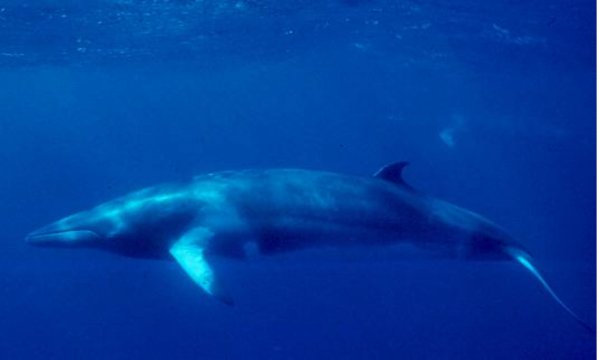This large animal skull washed up at the Island Beach State Park in New Jersey on Monday. Photo courtesy Island Beach State Park/Facebook
"That's where my Pterodactyl head went!!" one person joked in the comments.
![]()
The skull is so large that it reaches up to the hip area of this officer. Photo courtesy Island Beach State Park/Facebook
"You never know what you are going to find on the beach after a storm!" The New Jersey Department of Environmental Protection said in a tweet with the photos.
The storm had moved up the Eastern Seaboard on Sunday, creating damp and dreary conditions for much of the region ahead of the holiday weekend.
After asking for guesses on what creature the skull could belong to, the Department of Environmental Protection and Island Beach State Park confirmed that it was the ventral, or lower, jaw and skull of a minke whale.
Minke whales are a part of the rorquals, a family that includes both humpback whales and the blue whale.
Minkes are also considered the second smallest baleen whale, behind the pygmy right whales. Adults can typically reach up to 23 to 26 feet in length and weigh around 4 to 5 tons.
![]()
A minke whale is seen underwater. Photo courtesy National Oceanic and Atmospheric Administration
Scientists said a few years ago that a complex new call heard in the Mariana Trench, the world's deepest oceanic trench, was produced by a baleen whale. The call, dubbed the "Western Pacific Biotwang," was recorded and analyzed by researchers at the University of Oregon's Hatfield Marine Science Center.

















